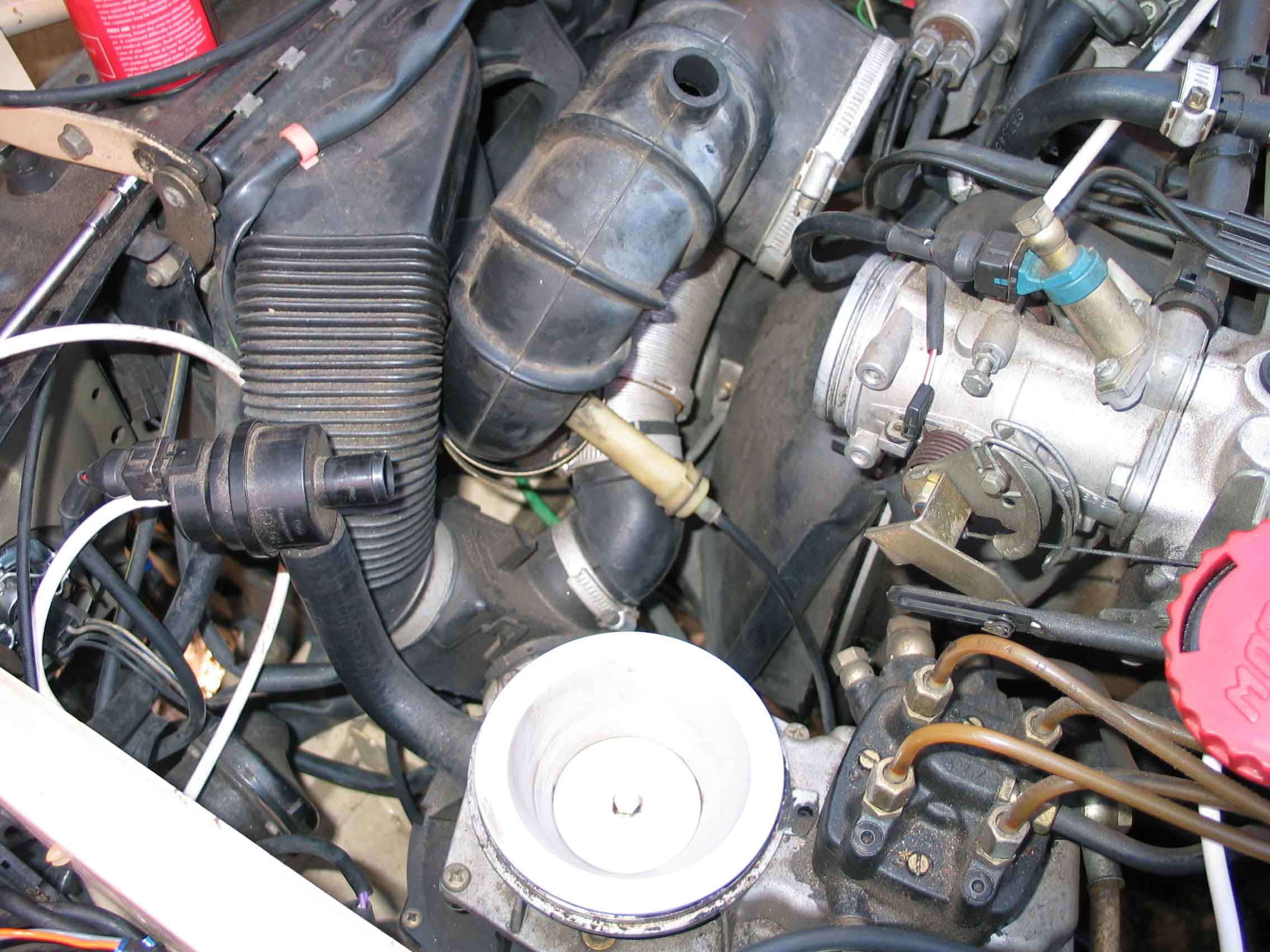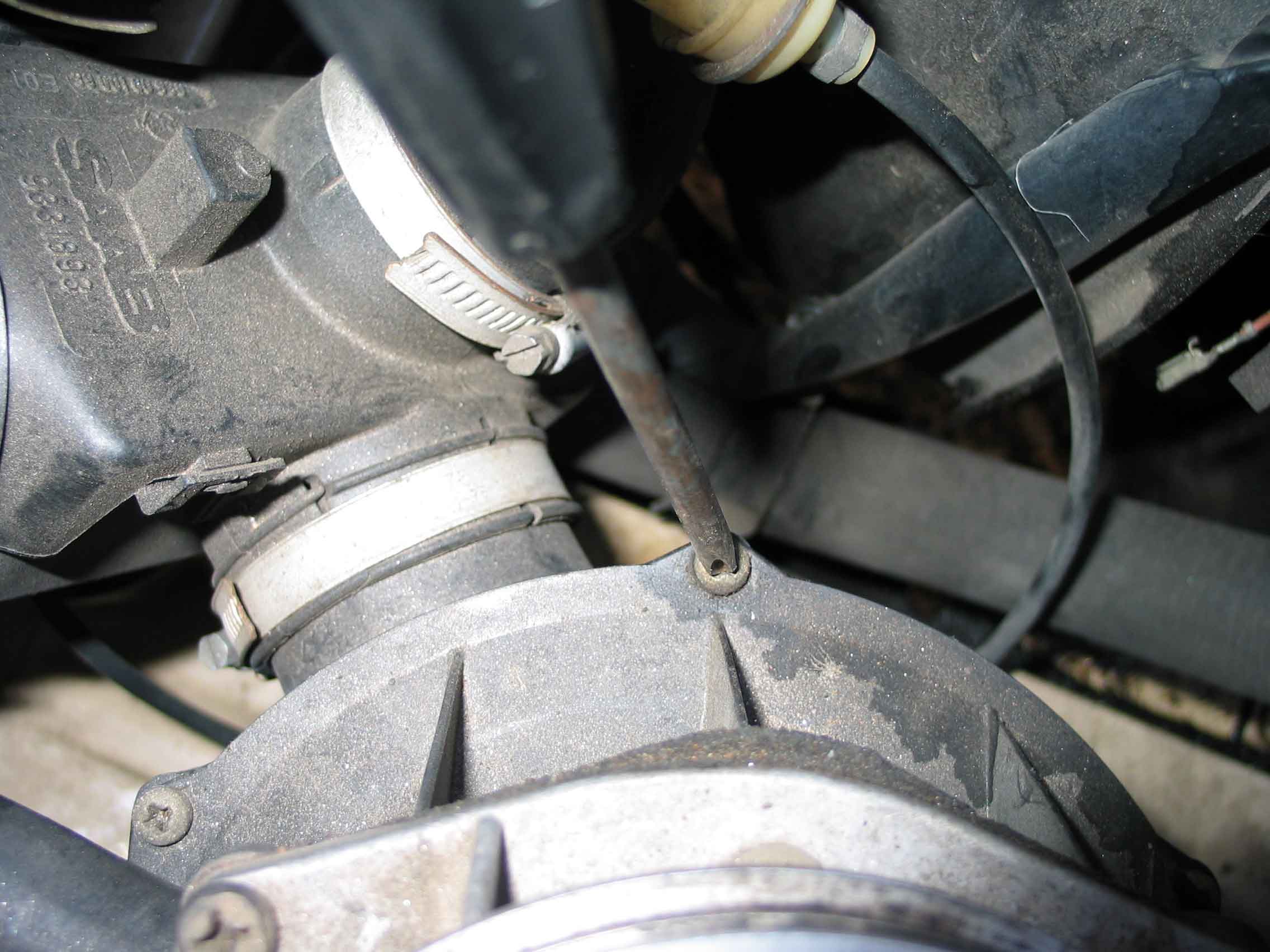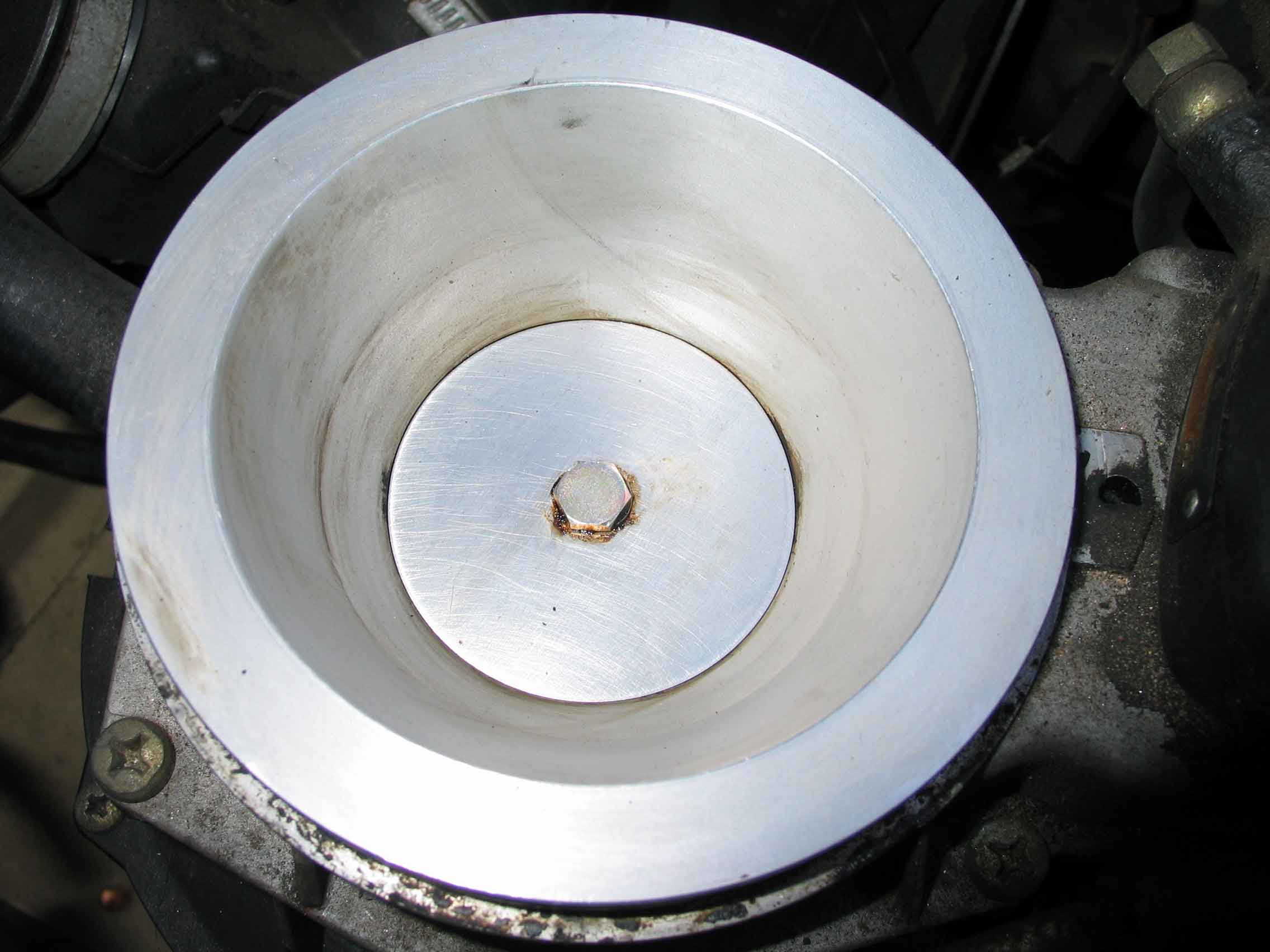First, I'll explain why there is a need to clean the plate in the first place:
Oil vapors, recirculated due to the crankcase ventilation system, get drawn, by design, into the throttle valve area in the intake manifold to be introduced back into the engine and re-burned. (It's a smog/emissions control strategy.)
As the engines wear, more "blow-by," or oil vapors, escape into the crankcase and travel by the rubber "vacuum" hoses over to the throttle body area. The heavier vapors collect over time, dribble down the rubber air filter bellows, and onto the circular metal airflow sensor plate, just above the air filter. See Image 3: click here or scroll down. If enough vapors accumulate, when they dry they can become a sticky mess that can hamper or halt airflow sensor plate movement (which is directly connected to the fuel distributor--the fuel metering device). That means such a situation could hamper fuel delivery to the cylinders, causing either hesitation or a no-start condition if the "goo" problem is bad enough.
What I do to alleviate that is to simply clean off the goo. I use acetone, available in many hardware and car parts stores. I also use a lintless cloth (don't want to introduce trash into the intake & engine!). Actually, I use a brand new paper coffee filter for each cleaning, and it may take more than one if your airflow sensor is really dirty. Just douse some acetone on it--wear rubber/latex gloves if you have sensitive skin--and wipe the goo off the airflow sensor and also where it sits.
DON'T PUSH DOWN ON THE AIRFLOW SENSOR! You could accidentally push it out of adjustment. Rather, lift the airflow sensor plate up by the bolt head in its center--it's the only bolt in the plate, really; use your thumbnail and index fingernail, or, like me, use a pair of needlenose pliers to grip the bolt. Once it is raised, support it with a few fingers underneath it while you wipe off the goo, to keep its adjustment from being disturbed. Be sure to clean the round hole which the plate drops back into, too.
While you're under the hood, take off the other end of the bellows, the intake manifold end. (You might have already done that, to make room to work in there.) With bellows off, clean out the throttle valve (a.k.a. "butterfly valve") with acetone, too. See image 5: click here or scroll down. For utmost ease, have an assistant inside the car sit in the driver's seat and floor the accelerator pedal to hold the valve open (or, if you're people-poor, hold it open yourself as I've had to do). Be sure to wipe off the valve's edges and also where it rests in its bore. Check visually to be sure it's clean by shining a flashlight inside the throttle valve area.
After you clean these items, your idle speed may increase a bit--depending on the amount of deposits removed--so don't be surprised if this occurs. You may have to adjust the idle down a bit because air is now getting past the throttle plate which wasn't flowing past it before your cleaning session. (It is my theory that this is why my '84 900S's idle speed gradually lowers over a period of several months and why I must adjust the idle speed screw more and more open to compensate.)
By the way, idle speed on these 8V models is adjusted via the (10mm socket/wrench size) air bleed bolt on the intake manifold--its hex head points towards the driver's side (US) fender. The bolt has a 10mm locknut to keep it from backing out/vibrating out of adjustment. DON'T ADJUST THE IDLE BY TURNING THE THROTTLE PLATE STOP SCREW! |




